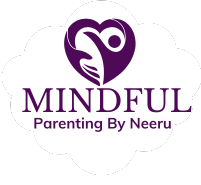Body, mind, and speech must be in perfect oneness and stillness, in order to reap full benefits of the body. The American Heart Association and the American Pediatric Association have affirmed the benefits of meditation and mindfulness-based practices, not only to patients with health conditions but also to children and healthy adults. It is therefore important to understand the effects of mindfulness and yoga, in nurturing yourself as well as your child’s well-being and mental health. This eastern contemplative practice and exercise regimen “are supported by contemporary science”, says Dr. Jonathan Fisher in his book” Just One Heart”. He says make it a habit to promote positive emotions like gratitude, joy, compassion, kindness, awe, and self-esteem as part of everyday life.” In his book, Authentic Happiness,” Seligman suggests three parts to well-being and a happy life.
1. The pleasant life.
2. The good life.
3. The meaningful life.
By practicing mindfulness and yoga daily, you can achieve positivity. The famous Psychologist, Abraham Maslow, in his famous “hierarchy of human needs”, talks about 5 levels of such needs the physiological needs, safety needs, belongingness, self-esteem needs and self actualization, he says these are a prerequisite to a flourishing life. There are many books which guide each pose step by step. Also if you or your child feel stress and anxiety there are so many therapeutic ways to manage like EMDR, CBT etc. Harness the science of mindfulness and yoga to foster the positive emotions of gratitude, kindness, joy, compassion and love into your family life.
